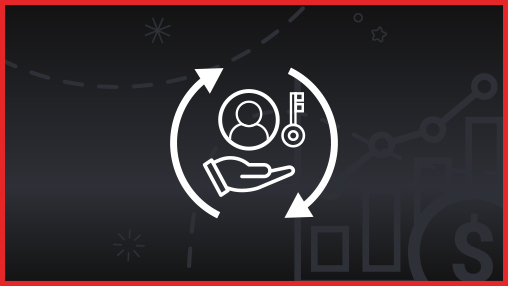B2B sales and marketing alignment refers to the strategic coordination and integration of a company’s sales and marketing teams, processes, and activities. It involves both teams working collaboratively towards shared goals, with consistent messaging, and a deep understanding of the customer’s journey.
Today, achieving strong alignment between sales and marketing is crucial for driving business growth, enhancing customer experiences, and maximizing revenue potential.
This blog post explores the importance of sales and marketing alignment, its key benefits, and practical strategies for fostering a cohesive, customer-centric approach within your organization.
What is sales and marketing alignment?
Sales and marketing alignment refers to the seamless coordination and collaboration between these two teams to ensure synchronized efforts toward common goals. It involves sharing customer data, insights, and strategies to deliver a consistent and cohesive experience throughout the buyer’s journey.
Why B2B sales and marketing alignment is crucial
Aligning marketing and sales operations allows businesses to achieve significant benefits, directly enhancing their bottom line and strengthening customer relationships. These benefits include:
1. Improved lead quality, conversion rates, and revenue growth
One of the most significant benefits of alignment between sales and marketing teams is the ability to generate higher-quality leads and improve conversion rates. By working together, these teams can better identify and target the ideal customer profile (ICP), ensuring that marketing efforts focus on attracting the right prospects. This collaborative approach results in a more efficient lead generation process, with marketing delivering qualified leads that are more likely to convert into customers.
In fact, research has shown that B2B organizations with tightly aligned sales and marketing operations achieved 24% faster three-year revenue growth and 27% faster three-year profit growth.
2. Better understanding of your ICP
Alignment between sales and marketing teams is crucial for developing a comprehensive understanding of your ICP. By collaborating closely, both teams can pool insights and data to create detailed profiles of your target audience’s pain points, preferences, and buying behaviors. This shared knowledge empowers the organization to create more targeted and effective campaigns, messaging, and sales strategies, ultimately leading to improved customer acquisition and retention.
3. Enhanced customer experience
A key benefit of aligning sales and marketing teams is the ability to provide a seamless and personalized customer experience across all touchpoints. From initial awareness to post-purchase support, customers receive consistent messaging and support, leading to increased satisfaction and loyalty. According to a study by Salesforce, 76% of customers expect companies to understand their needs and expectations. When these teams are aligned, it ensures a smooth transition as leads progress from the marketing funnel to sales conversations, building trust and confidence. This alignment results in improved customer retention, referrals, and long-term loyalty by delivering a cohesive and engaging experience.
4. Increased communication and collaboration
Alignment fosters open communication and collaboration between sales and marketing teams, enabling them to share insights, feedback, and best practices. This collaborative environment promotes continuous improvement and ensures that both teams are working towards common goals. By breaking down silos and encouraging cross-functional collaboration, organizations can create a more agile and responsive business that can adapt to changing market conditions and customer needs.
5. More effective Account-Based Marketing (ABM)
Account-Based Marketing strategies require close coordination between sales and marketing teams to identify and target high-value accounts effectively. Alignment enables seamless execution of ABM campaigns, personalized messaging, and targeted sales efforts, resulting in higher engagement and conversion rates.
Learn more:
- Account Based Marketing Trends to Watch Out For
- ABM Infographic: 15 Questions ANSWERED
- 3 Types of ABM (And How to Choose the Right Approach)
The alignment of sales and marketing operations is not just beneficial but crucial for B2B organizations aiming for growth and competitive advantage. By working together, these teams can improve lead quality, enhance customer experience, foster collaboration, and drive significant revenue growth. Prioritizing this alignment can lead to sustained success and stronger customer relationships.
6 strategies for achieving B2B sales and marketing alignment
Ready to achieve true alignment between sales and marketing teams? Here are some key steps and best practices to bridge the gap:
1. Create a collaborative environment
The first step in achieving alignment is to foster a culture of collaboration between sales and marketing teams. This involves encouraging open communication, setting shared goals, and establishing regular meetings and touchpoints between the two departments.
To create a collaborative environment, consider implementing the following tactics:
- Schedule regular cross-functional meetings to share insights, discuss challenges, and align on strategies
- Establish clear roles and responsibilities for each team member to ensure accountability and minimize confusion
- Encourage informal communication and relationship-building through team-building activities and social events
- Celebrate successes together and recognize the contributions of both teams in achieving common goals
2. Align on the buyer’s journey
“91% of B2B buyers expect at least some level of personalization during the purchasing process.” – B2B Tech Buyer Behavior | Inbox Insight
To deliver a seamless and personalized customer experience, sales and marketing teams must align on the buyer’s journey. This involves developing a comprehensive understanding of the various stages, touchpoints, and pain points that the customer experiences throughout their journey.
To align on the buyer’s journey, consider these tactics below:
- Collaborate to create a detailed buyer persona that captures the key characteristics, challenges, and preferences of your target audience
- Map out the entire buyer’s journey, including the awareness, consideration, decision, and post-purchase stages
- Identify the key touchpoints and channels where the customer interacts with your brand, such as your website, social media, email, and sales conversations
- Develop targeted content, messaging, and sales strategies for each stage of the buyer’s journey, ensuring a consistent and personalized experience
3. Ensure consistent messaging and content
Consistency is key to building trust and credibility with your target audience. To achieve this, sales and marketing teams must align on messaging, branding, and content strategies to deliver a cohesive and compelling narrative across all channels and touchpoints.
Here are several tactics that both teams should consider to achieve alignment:
- Develop a clear brand voice and messaging framework that reflects your unique value proposition and resonates with your target audience
- Collaborate on content creation, ensuring that all materials are aligned with your brand messaging and support the sales process
- Establish a content review and approval process to maintain quality and consistency across all channels
- Regularly review and update your messaging and content to ensure it remains relevant and effective
4. Produce valuable sales enablement content
Sales enablement content is a critical tool for empowering sales teams to effectively engage prospects and close deals. To create high-quality sales enablement content, marketing teams must work closely with sales to understand their needs and challenges.
To produce valuable sales enablement content, consider the following:
- Collaborate with sales to identify the most common questions, objections, and pain points that they encounter during the sales process
- Develop a range of sales enablement materials, such as case studies, product demos, competitive analyses, and pitch decks, that address these challenges and support the sales process
- Ensure that all sales enablement content is easily accessible and up-to-date, using a centralized content management system or sales enablement platform
- Regularly gather feedback from sales on the effectiveness of the content and iterate based on their insights
5. Streamline processes and use technology
Alignment requires seamless collaboration and data sharing between sales and marketing teams. To facilitate this, organizations must streamline processes and leverage technology solutions that bridge the gap between the two departments.
To streamline processes and use technology effectively, the following tactics might be of use:
- Implement a CRM system that enables sales and marketing to share customer data, track interactions, and collaborate on opportunities
- Use marketing automation platforms to streamline lead generation, nurturing, and scoring processes, ensuring that sales receives high-quality, sales-ready leads
- Use workflow automation tools to automate repetitive tasks, such as sending follow-up emails, scheduling meetings, or updating records in the CRM
- Leverage analytics tools to gain insights into customer behavior, campaign performance, and sales effectiveness, using this data to continuously optimize your strategies
- Establish clear processes and workflows for lead handoffs, opportunity management, and customer support, ensuring that both teams are aligned and accountable
6. Use shared goals and metrics
Finally, to achieve true alignment, sales and marketing teams must work towards shared goals and measure success using common metrics. This ensures that both teams are focused on achieving the same objectives and are held accountable for their contributions to business growth.
To establish shared goals and metrics, here are some tactics:
- Collaborate to define clear, measurable goals that align with your overall business objectives, such as revenue growth, customer acquisition, or market share
- Identify the KPIs that will be used to measure progress towards these goals, such as lead generation, conversion rates, customer lifetime value, or customer satisfaction
- Establish a regular reporting cadence to track progress against these metrics, using dashboards and scorecards to provide visibility and accountability
- Celebrate successes together and use insights from the data to continuously optimize your strategies and tactics
How Inbox Insight solves sales misalignment
At Inbox Insight we believe that one way to improve collaboration with Sales leaders is for Marketing to bring them into the planning process. A joint understanding needs to be formed about:
- The goals of the program
- Targeting being used (who the Ideal Customer Profile is or the Target Account List)
- The content being promoted and the ad copy being used
- The tactics and user journey of the prospect (where and how content is being syndicated)
- The Service Level Agreement and the handover process to sales (when leads should go over and how they will be worked)
We put lead prioritization at the heart of our demand generation campaigns by using 1st and 3rd party intent data and a custom AI model to rank every lead. This helps sales focus on the buyers who are most in-market, and the marketing team continue to nurture accounts who need more convincing.






